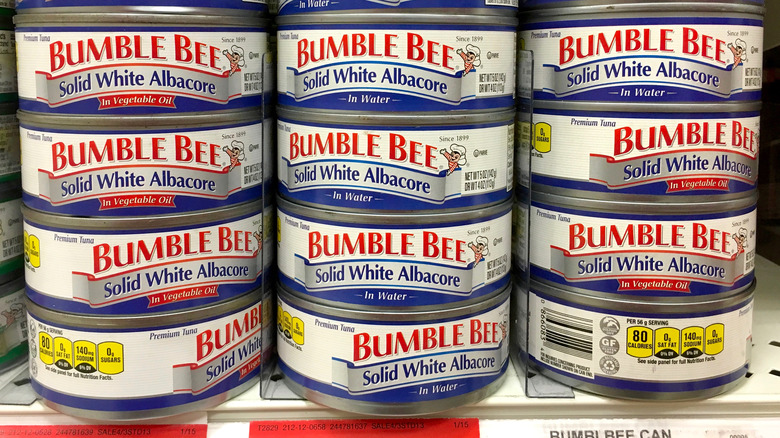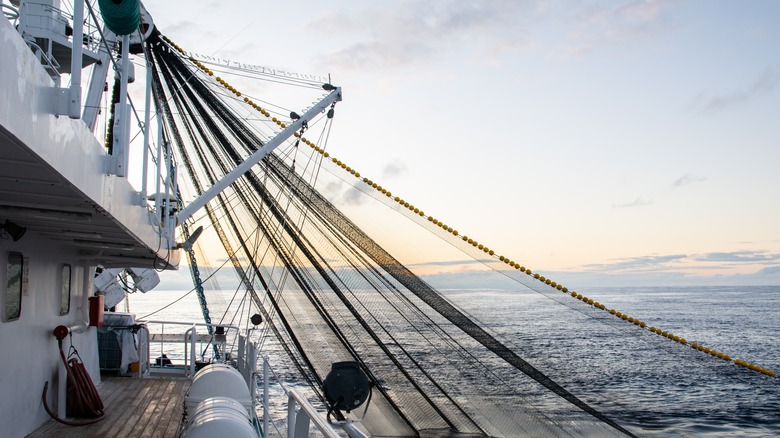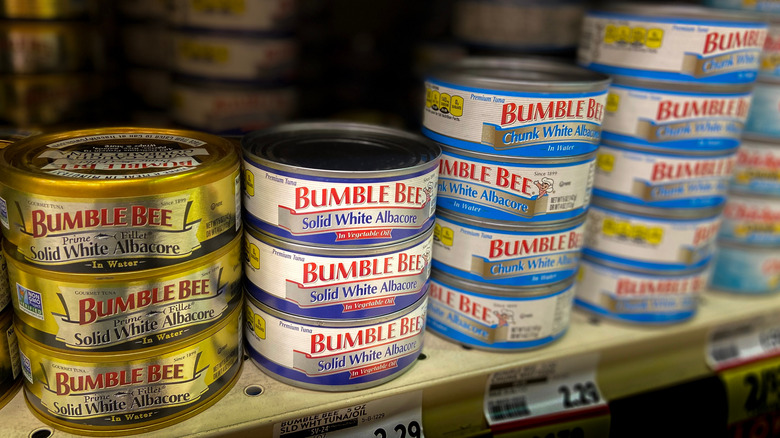Bumble Bee Seafood Company Didn't Start Out Canning Tuna
When we think of tuna, the image that pops into our head is the Bumble Bee can in the grocery store. In fact, some of us have such a strong association with tuna in a can that we don't even know what the actual fish looks like! We have grown accustomed to Bumble Bee as the long and trusted supplier of canned tuna for nutritious snacks and salads, as well as a popular ingredient in many casseroles.
Bumble Bee has been around for over 120 years since the fishing industry in Oregon was nascent. The brand is, without a doubt, a staple amongst American consumers when it comes to affordable and convenient seafood. But it will come as a surprise to many that in the beginning, Bumble Bee had nothing to do with tuna, and it wasn't until many years later that it would become a significant part of the company's operations.
More than tuna
Before they were nearly decimated by disease, Native Americans were fishing the waters around the Pacific Coast of Oregon and inland along the Columbia River, trading salmon and other types of fish with white settlers and explorers, according to the NW Council). By the end of the 1800s, the fishing industry proper came into its own, with small fishing fleets trying to capitalize on the mostly untapped waters, where salmon was the primary harvest.
In 1899, Bumble Bee started in the port city of Astoria, Oregon, where it was one of several small fishing companies in the area that formed the Columbia River Packers Association (CRPA) (via The Daily News). As this was during the so-called "Great Salmon Rush," the newly formed company aggressively purchased new fishing boats and built a cannery on Alaska's Bristol Bay, entirely dedicated to the fishing and processing of salmon.
It wasn't until several decades later that tuna started to come into play for the industry. According to The Daily News, tuna was just an annoyance to those trying to catch salmon until the 1930s, when ocean currents started to get warmer, resulting in an increase in albacore tuna off the coast of Oregon. They soon realized that because tuna is larger than salmon, catching and processing them offered significant cost and labor savings, and companies in the CRPA started actively fishing for more tuna.
What is Bumble Bee up to now?
In the 1950s, the iconic mascot Horatio was created — the tiny big-eyed bumblebee wearing a chef's hat — and it still decorates the cans today (per The Bumble Bee Company). By the 1960s, the CRPA conglomerate officially adopted the name Bumble Bee and became a household name for quality canned seafood.
Bumble Bee has all but left Astoria, Oregon, leaving behind only a museum and brewery in the old canneries of the company. Today Bumble Bee's sales extend globally, with its fishing operation in Puerto Rico and San Diego (via Company Histories). They have gone through several corporate makeovers over the years and currently rank second in the U.S. tuna market, below the well-known brand Starkist. In 2014, Bumble Bee tried to merge with Chicken of the Sea, the third-largest tuna company, but the Department of Justice rejected this over antitrust concerns (according to the Department of Justice). Furthermore, both companies were caught in a price-fixing conspiracy and ordered to pay millions as a result (per Slate). This is just one of several controversies involving Bumble Bee, which has also been under pressure from activists over its fishing techniques that inadvertently trap and harm dolphins.
Today corporate efforts are focusing on sustainable objectives and protecting the ocean environment. And while Bumble Bee continues to be synonymous with tuna, its products also include salmon, crab, oysters, scallops, clams, and mackerel, making them a comprehensive seafood company.


